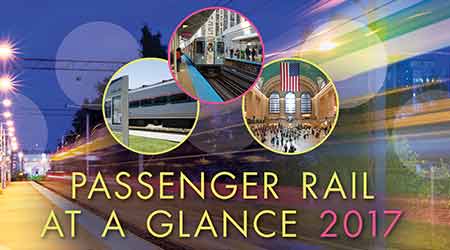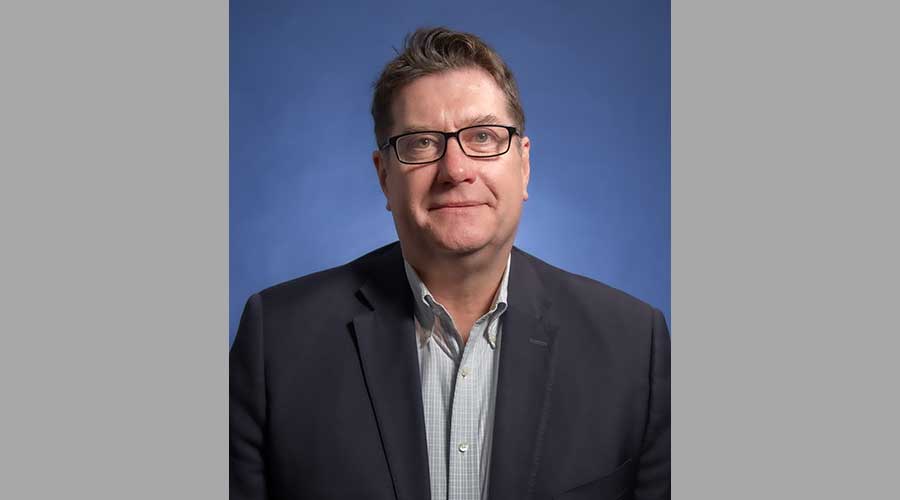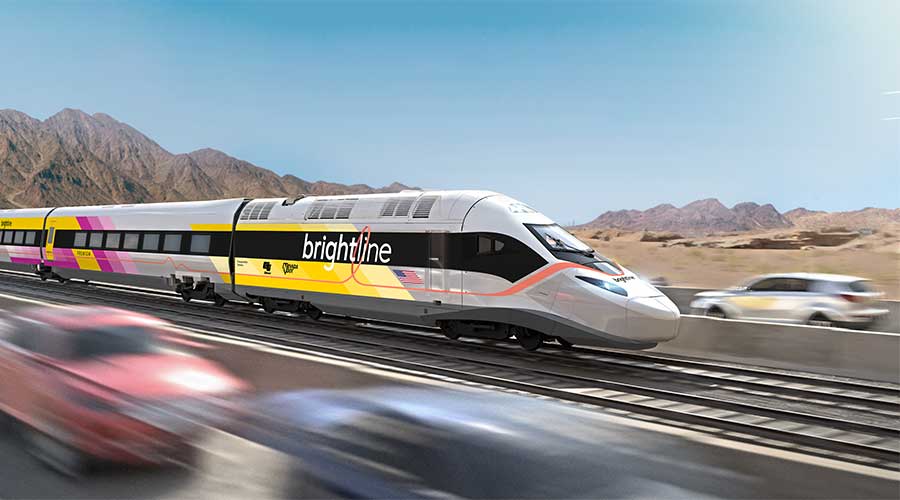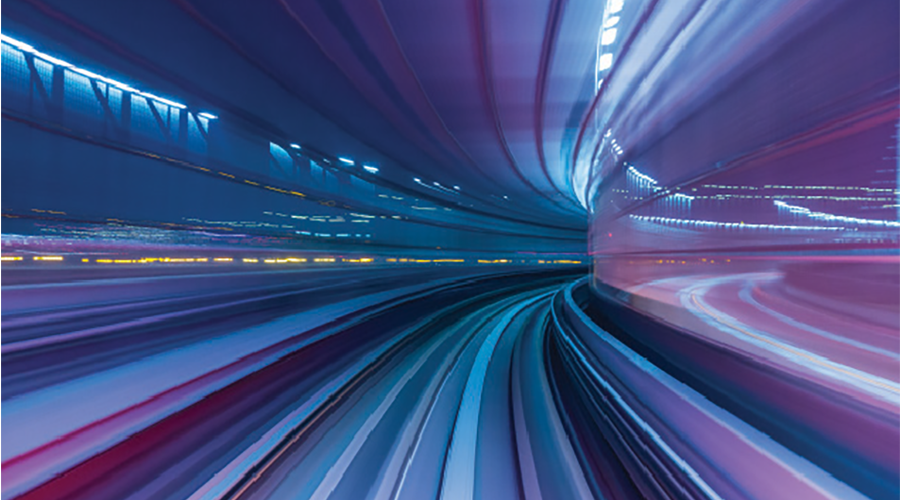Stay updated on news, articles and information for the rail industry
 railPrime
railPrime
October 2017
Part 1 : Progressive Railroading's Passenger Rail at a Glance 2017: Preface
Part 2 : Progressive Railroading's Passenger Rail at a Glance 2017: Amtrak, California, & Colorado
Part 3 : Progressive Railroading's Passenger Rail at a Glance 2017: District of Columbia, Florida, Georgia, Illinois, & Louisiana
Part 4 : Progressive Railroading's Passenger Rail at a Glance 2017: New Jersey, New York, & Ohio
Part 5 : Progressive Railroading's Passenger Rail at a Glance 2017: Pennsylvania, Texas, & Washington
Rail News: Passenger RailProgressive Railroading's Passenger Rail at a Glance 2017: District of Columbia, Florida, Georgia, Illinois, & Louisiana

DISTRICT OF COLUMBIA
Washington Metropolitan Area Transit Authority*
Operating budget: $1.8 billion
The Washington Metropolitan Area Transit Authority (WMATA) was created in 1967 for the purpose of creating and operating a public transit system serving D.C. and areas in Virginia and Maryland. WMATA operates Metrorail.
Miles: 118
Rolling stock: Rail cars — 132 Rohr Series 1000, 76 Breda Series 2000, 282 Breda Series 3000, 100 Breda Series 4000, 192 CAF Series 5000, 184 Alstom Series 6000, 276 Kawasaki Series 7000. By the end of 2017, WMATA plans to retire all 1000- and 4000-Series rail cars. WMATA also expects to receive 20 new 7000 Series rail cars per month from Kawasaki.
Ridership: Metrorail’s highest ridership day in 2016 was 767,041 trips on March 24.
Annual operating expense: $1.8 billion (FY2017)
Capital budget: $6 billion, per 2017-2022 Capital Improvement Plan
Stations: 91
Major capital improvement projects underway: SafeTrack program to address the National Transportation Safety Board’s safety recommendations and Federal Transit Administration’s safety management inspection requirements; Silver Line rail expansion.
* Information source: wmata.com
FLORIDA
SunRail
Operating budget: $32.55 million
The Florida Department of Transportation (FDOT) is charged with construction, operation and maintenance of SunRail, a commuter-rail service in Central Florida. SunRail’s first phase — a 32-mile line from DeBary in Volusia County to Sand Lake Road in Orange County — opened for passenger service in May 2014. SunRail service currently runs along the existing Central Florida rail corridor.
Rolling stock: 10 locomotives, average age 3 years; 20 rail cars, average age 3 years
Cars/locomotives on order: 1 diesel electric locomotive manufactured by Motive Power Inc.; expected delivery in third-quarter 2017
Annual ridership: 887,000 (2016)
Annual Operating budget: $32.55 million (2016)
Annual capital cost: $45.35 million (2016)
Stations: 12
Major capital improvement projects underway: FDOT is undertaking an expansion of SunRail Phase 1. The new phase, called “SunRail Phase 2 South,” is a 17-mile southern extension with four new stations. The $187 million construction project was awarded to Middlesex-Herzog Joint Venture in 2016. SunRail Phase 2 South will extend the line from the existing Sand Lake Road area to Poinciana in Osceola County and is scheduled to open for service by summer 2018.
GEORGIA
Metropolitan Atlanta Rapid Transit Authority
Operating budget: $461.6 million
The Metropolitan Atlanta Rapid Transit Authority (MARTA) is the principal rapid-transit system in the Atlanta area. It provides rail and bus service to 1.7 million residents of metro Atlanta.
Service launched: Heavy rail, 1979
Track Miles: 48
Rolling stock: 318 rail cars
Annual ridership: 215,400 average weekday, heavy rail*
Annual operating cost: $461.6 million (projected for FY2018)
Annual capital cost: $434.7 million (projected for FY2018)
Stations: 38 (rail)
Major capital improvement projects: In November 2016, Atlanta area voters passed a 0.5 percent sales tax that will generate about $2.5 billion over 40 years that will be spent on MARTA high-capacity rail improvements, new infill rail stations and bus expansion.
*APTA Transit Ridership Report, Q1 2017
ILLINOIS
Chicago Transit Authority*
Operating budget: $1.5 billion
The Chicago Transit Authority (CTA) operates the second largest public transportation system in the United States. The CTA is a regional transit system that serves the city of Chicago and 35 suburbs.
Service launched: 1947
Miles of track: 224
Rolling stock: 1,492 rail cars
Annual rail ridership: 238.6 million (2016)
Annual Operating budget: $1.5 billion (proposed for 2017)
Annual capital budget: $1.37 billion (proposed for 2017)
Stations: 145
Major capital projects underway: L improvements, such as Garfield Station rehabilitation and gateway (Green Line), $50 million; Illinois Medical District Station renovation (Blue Line), $23 million; Quincy Station renovation, $18.2 million; Red Ahead program for maintaining, modernizing and expanding the Red Line; slow zone elimination program (multiple lines); elevator/escalator repair, updates and reconditioning (multiple lines); and Your New Blue (Blue Line O’Hare Branch), $492 million.
* Information source: CTA website
Metra
Operating budget: $781.2 million
Metra is one of the largest commuter-rail systems in North America, serving Cook, DuPage, Will, Lake, Kane and McHenry counties in northeastern Illinois. The agency provides service to and from downtown Chicago with 241 stations over 11 routes and approximately 1,200 miles of track. Metra operates nearly 700 weekday trains, providing about 300,000 passenger trips each weekday.
Service launched: 1984
Route Miles: 487
Rolling stock: 150 locomotives, average age 30 years; 850 rail cars, average age 29 years; 186 EMUs, average age 4 years.
Annual ridership: 80.4 million
Annual operating cost: $781.2 million
Annual capital expense: $380.5 million
Stations: 241
Major capital improvement projects:
• Milwaukee West Line Fox River Bridge improvement — Located about 35 miles northwest of downtown Chicago, the 136-year-old Milwaukee West Line Fox River Bridge carries 54 Metra commuter trains and up to eight Canadian Pacific (CP) freight trains each weekday. Although the has been regularly maintained, many components are significantly deteriorated and no longer can be economically repaired. Metra plans to replace the single-track bridge with a double-track structure, which would help resolve the bottleneck delays caused by a single-track structure; improve the line’s reliability and operational flexibility; and reduce maintenance costs. Metra received a $14 million federal Transportation Investment Generating Economic Recovery (TIGER) grant for the $34 million project. Metra and CP will share the remaining cost, with $6 million from CP and $14 million from Metra. Construction should start in the fourth quarter and take about three years.
• Union Pacific West Line third mainline track project — More than 50 freight trains and 60 Metra trains carrying nearly 30,000 passengers share the Metra Union Pacific West Line each day. In 2008, the two railroads entered into a partnership to develop the Metra UP West Line improvement project to be completed in four phases. Completed work includes an upgraded rail signal system, new crossovers and a variety of safety enhancements. The fourth and final component is the completion of a third set of tracks in the only remaining double-track segments along the line, removing two critical bottlenecks. Construction on the eastern segment is expected to begin in fall and take about a year to complete; construction on the western segment is anticipated to begin in summer 2018 and take 19 months. The design and construction cost of $100 million will be paid by UP and Metra. Illinois Construction Contractors was awarded the contract for eastern section.
• Metra/UP North Line bridges, Ravenswood Station — The next phase of the multiyear UP North bridge project will replace bridges over 11 streets on Chicago’s north side, as well as construct the inbound half of the new Ravenswood Station. The existing bridges are more than 100 years old and no longer can be economically repaired and maintained. Work also includes construction of the inbound half of the Ravenswood Station, the busiest on the line. The station’s outbound half was completed in 2015. Construction is expected to start in fall and last about 30 months.
LOUISIANA
New Orleans Regional Transit Authority
Operating budget: $10.4 million
The New Orleans Regional Transit Authority (NORTA) provides New Orleans with multimodal mobility services, including streetcars. With nearly 40 routes across modes, the agency’s vehicles cover 14,000 miles each day, and passengers take more than 18 million trips annually.
Commuter-rail Service launched: 1835
Miles: 32 miles of track
Rolling stock: 66 streetcars
Annual commuter-rail ridership: 8,084,359
Annual operating cost: $10.4 million
Annual capital cost: $5.6 million
Stations: 2
Major capital improvement projects underway: Riverfront Streetcar Line special trackwork replacement and tamping (engineering in progress); St. Charles Streetcar Line downtown loop track pavement replacement (engineering under review and negotiation); Riverfront Streetcar Upriver Connector (engineering in progress); Rampart/St. Claude Streetcar expansion (construction in project closeout); and Cemeteries Transit Center Streetcar Expansion (construction in progress). Future infrastructure projects may include a streetcar expansion from the Riverfront to St. Claude & Elysian Fields to Press (in planning phase).


 2025 MOW Spending Report: Passenger-rail programs
2025 MOW Spending Report: Passenger-rail programs
 Gardner steps down as Amtrak CEO
Gardner steps down as Amtrak CEO
 Guest comment: Oliver Wyman’s David Hunt
Guest comment: Oliver Wyman’s David Hunt
 Women of Influence in Rail eBook
Women of Influence in Rail eBook








